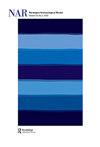集合考古。教学、实践与研究
IF 1.1
3区 历史学
0 ARCHAEOLOGY
引用次数: 0
摘要
这本书是对考古学知识生产的及时而重要的贡献。这本书以两位作者自己的教学经验和之前关于教育学的对话为基础,为集合方法的价值提供了令人信服的理由。所提供的解决方案需要重新思考考古学的教学、培训和实践,将这门学科变成调查的主题。面对新自由主义政治经济学及其对人文学科“有用”的狭隘要求,有必要重新梳理和编织考古教学与研究之间的关系网。这本书的核心是解决教学价值的低估问题。正如作者所指出的,这种低估严重影响了当代考古实践的基本面,并植根于学科人口结构缺乏多样性。总的来说,这本书写得很好,结构很好,研究也很好。然而,它最大的优点是,它提供了一种同情的观点,认真对待学生——包括他们进入考古学的各种观点和切入点。从早期开始,读者就被两个关键品质所打动。首先是这本书对考古学老师有多有用。不仅在提供实用建议方面,而且在为与该学科特别相关的教学研究提供急需的全面地位方面。第二个特点是作者对新自由主义的批评是多么清晰。最后一章很好地总结了核心信息:“挑战新自由主义议程的一个根本方法[…]是认识到[…]学习的产生是通过研究,而研究往往是通过教学产生的”(第153页,原始重点)。Cobb和Croucher对这本书的出发点可能会让考古学中最有经验的理论老师感到谦卑。这些读者会很快认识到集合框架的哲学遗产,主要借鉴德勒兹和瓜塔里的《一千个高原》(Deleuze and Guattari 1987),但也提到了一系列“集合思想家”,如德兰达、拉图尔、巴拉德和贝内特(参见Hamilakis和Jones 2017,第80-81页)。一个关键的概念是根茎式学习,“沿着混乱、非线性、复杂和不可预测的路线发展的东西”。这促使作者重新思考“以现实主义、新唯物主义、非人类中心主义的方式对过去和现在的实践进行解释”(第46–47页)。虽然这种奇妙的“混乱”方法与学生的不确定性和不可预测性体验持平,但它并不是最容易用通俗易懂的方式传达的。在我看来,Cobb和Croucher很好地做到了这一点,首先也是最重要的是,他们从未忽视自己真正想要实现的目标:一种具体的考古教学法,认真对待学生的日常挑战和生活世界。这本书由10章组成,具有累积结构。其中五章是相对传统的书籍章节:引言(第1章),然后是三个核心理论讨论章节(第4、6和8章)。第8章的标题“一千种学习组合:教学和规模”是对德勒兹和瓜塔里的致敬(德勒兹与瓜塔里,1987年)。最后的第10章提供了一系列总结性思考和建议。有趣的是,作者将学生的叙述编织成了这种更传统的教科书结构。承载这一叙述的五章通常较短本文章由计算机程序翻译,如有差异,请以英文原文为准。
Assembling Archaeology. Teaching, Practice, and Research
This book is a timely and important contribution to knowledge production in archaeology. Firmly grounded in the two authors’ own teaching experience and previous conversations about pedagogy, the book makes a convincing case for the value of assemblage approaches. The solution offered requires a rethinking of teaching, training, and practice in archaeology, turning the very discipline into the subject of investigation. Facing neoliberal political economy and its narrow-minded demands for humanistic disciplines to be ‘useful’, there is a need to resituate and re-weave the web of relations between archaeological teaching and research. At its core, the book addresses the undervaluing of teaching. As the authors point out, such undervaluing has seriously affected the fundamentals of contemporary archaeological practice and is anchored in a lack of diversity in disciplinary demographics. Overall, the book is well written, well-structured, and well researched. Its greatest merit, however, is that it offers a sympathetic view that takes students – including their various viewpoints and points of entry into archaeology – seriously. From early on this reader is struck by two key qualities. The first is how useful the book is for teachers of archaeology. Not only in giving practical advice, but also in providing a much-needed comprehensive status for pedagogical research of particular relevance for the discipline. The second quality is how refreshingly clear the authors are in their criticism of neoliberalism. The core message is well summarized in the concluding chapter: ‘a fundamental way to challenge neoliberal agendas [...] is to recognize [...] that a place in which learning emerges is through research, and that research often emerges through teaching’ (p. 153, orig. emphases). Cobb and Croucher’s departure point for this book might humble even the most experienced teachers of theory in archaeology. Such readers will quickly recognize the philosophical heritage of the assemblage framework, drawing primarily on Deleuze and Guattari’s A Thousand Plateaus (Deleuze and Guattari 1987) but referring to a wide array of ‘assemblage thinkers’ like DeLanda, Latour, Barad, and Bennett (cf. Hamilakis and Jones 2017, pp. 80–81). A key concept is rhizomatic learning, ‘something which develops along messy, non-linear, complicated, and unpredictable routes’. This fuels the authors’ rethinking of ‘both interpretations of the past and practice in the present in realist, new materialist, non-anthropocentric ways’ (pp. 46–47). While this wonderfully ‘messy’ approach levels with students’ experiences of uncertainty and unpredictability, it is not the easiest to convey in an accessible manner. In my opinion, Cobb and Croucher manages this quite well, first and foremost because they never lose sight of what they really want to achieve: a concrete archaeological pedagogy that takes students’ everyday challenges and life-worlds seriously. The book consists of 10 chapters and has a cumulative structure. Five of the chapters are relatively conventional book chapters: an Introduction (Chapter 1) followed by three central theoretical discussion chapters (Chapters 4, 6 and 8). The title of Chapter 8, ‘A Thousand Learning Assemblages: Teaching Learning and Scale’, is a nod to Deleuze and Guattari (Deleuze and Guattari 1987). The final Chapter 10 offers a set of concluding reflections and recommendations. Interestingly, the authors’ weave a student narrative into this more traditional textbook structure. The five chapters carrying this narrative are generally shorter and are all
求助全文
通过发布文献求助,成功后即可免费获取论文全文。
去求助
来源期刊

Norwegian Archaeological Review
ARCHAEOLOGY-
CiteScore
2.10
自引率
0.00%
发文量
13
期刊介绍:
Norwegian Archaeological Review published since 1968, aims to be an interface between archaeological research in the Nordic countries and global archaeological trends, a meeting ground for current discussion of theoretical and methodical problems on an international scientific level. The main focus is on the European area, but discussions based upon results from other parts of the world are also welcomed. The comments of specialists, along with the author"s reply, are given as an addendum to selected articles. The Journal is also receptive to uninvited opinions and comments on a wider scope of archaeological themes, e.g. articles in Norwegian Archaeological Review or other journals, monographies, conferences.
 求助内容:
求助内容: 应助结果提醒方式:
应助结果提醒方式:


